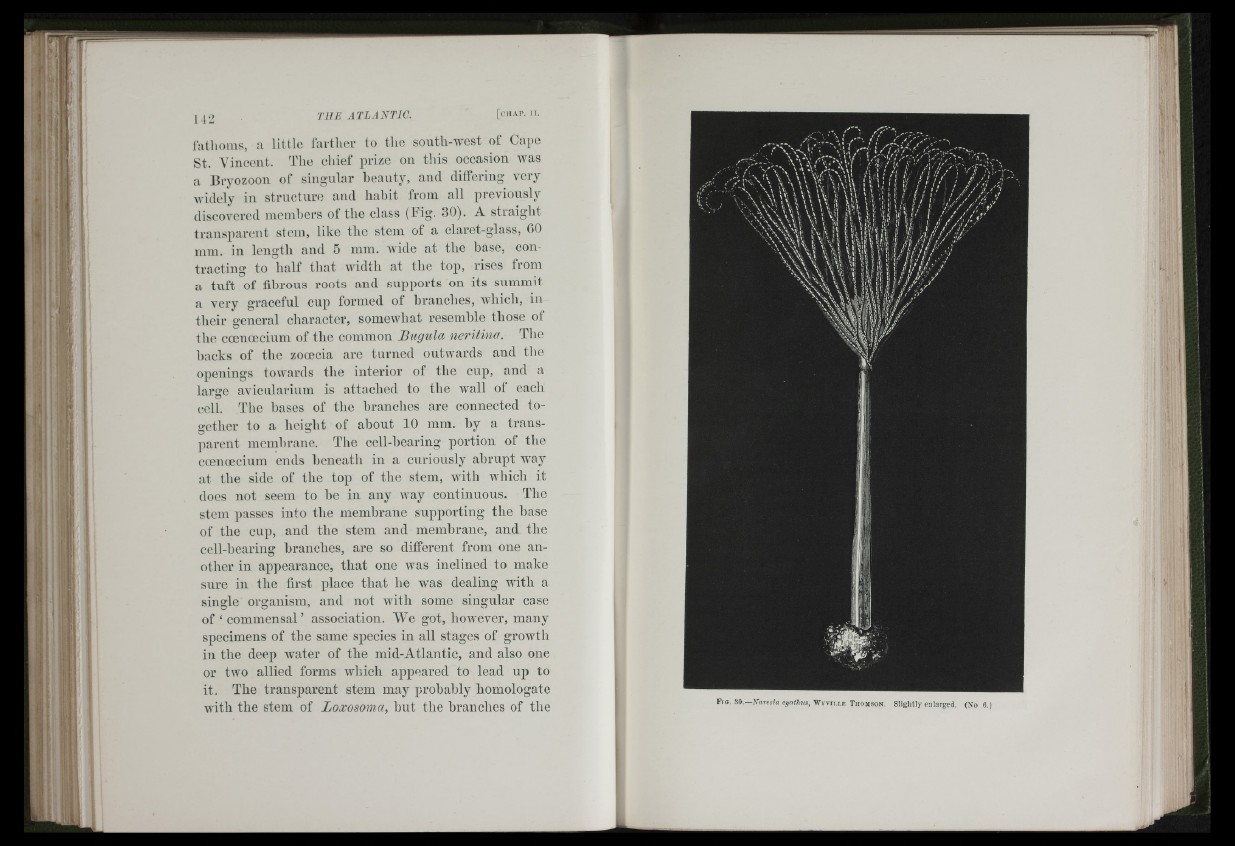
: II
t \
I I
142 r i l E A T L A N T I C . [c h a p . II.
iathoins, a little fartlier to the south-Avest of Cape
St. Ahncciit. The chief prize on tliis occasion AA^as
a Bryozoon of singular beauty, and differing very
Avidely in structure and habit from all previously
discoA'crcd members of tbe class (Pig- 30). A straight
transparent stem, like the stem of a claret-glass, GO
mm. in length and 5 mm. Avide at tbe base, contracting
to half tliat Avidtb at the top, rises from
a tuft of fibrous roots and supports on its summit
a A'ery graceful cup formed of brandies, AA'liicli, in
tbeir general character, somcAAdiat resemble those of
tbe ccenoccium of the common Bugula neritina. The
backs of the zooecia are turned ont Avar ds and the
openings toAA'ards the interior of tbe cup, and a
larcre avicularium is attached to the Avail of each
cell. The bases of the branches are connected together
to a heiglit of about 10 mm. by a transparent
membrane. The cell-bearing portion of tbe
coQiioecium ends beneath in a curiously abrupt AA^ay
at the side of the top of the stem, AA'itb Avhich it
does not seem to he in any Avay continuous. The
stem passes into the membrane supporting the base
of the cup, and the stem and memhrane, and the
cell-hearing branches, are so different from one another
in appearance, that one Avas inclined to make
sure in the first place that he AA'as dealing AA'ith a
single organism, and not Avith some singular case
of ‘ commensal ’ association. We got, hoAvever, many
specimens of the same species in all stages of groAAdh
in the deep Avater of the mid-Atlantic, and also one
or tAVO allied forms Avhicli appeared to lead up to
it. The transparent stem may probably homologate
AA'ith the stem of Loxosoma, hut the branches of the Fro. 30.—A 'n m i o cyni/iiis, W y v i i .i .e T h o m s o n . Slightly enlarged. (Xo 6.;